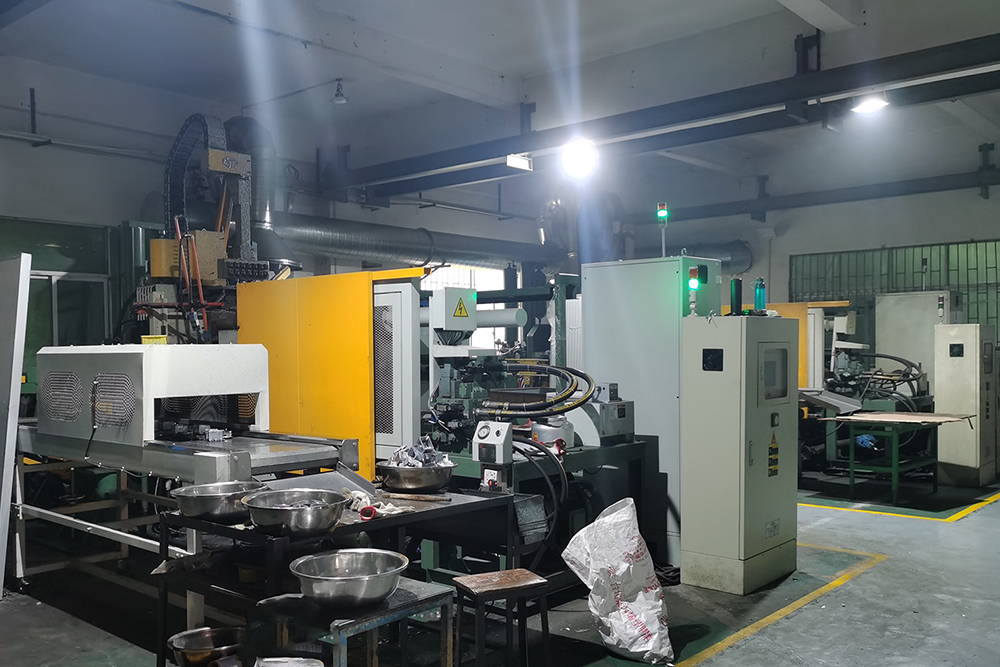Die casting is a metal casting process characterized by the use of a mold cavity to apply high pressure to the molten metal. Molds are usually machined from higher strength alloys, some of which are similar to injection molding. Most die castings are iron-free, such as zinc, copper, aluminum, magnesium, lead, tin, and lead-tin alloys and other alloys. Depending on the type of die casting, a cold chamber die casting machine or a hot chamber die casting machine is required.
Die casting is a casting method in which a molten alloy liquid is poured into a pressure chamber, a cavity of a steel mold is filled at a high speed, and the alloy liquid is solidified under pressure to form a casting. The main features of die casting that distinguish it from other casting methods are high pressure and high speed.
1. The molten metal fills the cavity under pressure and crystallizes at a higher pressure. The common pressure is 15-100 MPa.
2. Metal liquid fills the cavity at high speed, usually at 10-50 m / s, and some can also exceed 80 m / s, (line speed through the ingate into the cavity – ingate speed), so the molten metal‘s filling time is extremely short, and the cavity can be filled in about 0.01-0.2 seconds (depending on the size of the casting).
Die-casting is a precision casting method. Die-casting parts cast by die-casting, have very small dimensional tolerances and high surface precision. In most cases, die-casting parts can be assembled without turning. Parts can also be cast directly.
Anebon die casting process offers many important benefits, including:
1. Customization: It helps to achieve complex designs and forms that make it easy to customize castings to specific manufacturing processes.
2. Low cost
3. Multi-functional and corrosion-resistant
4. High effiency
As a die-casting manufacturer, Anebon Die Casting offers complete, comprehensive assembly and testing of all die-cast parts and products. Whether pepole are interested in special components such as aluminum die casting or vacuum die casting, or just want to be a prototype of a new part, people can get a full service experience in our factory.
Material
The metal used for die casting mainly include zinc, copper, aluminum, magnesium, lead, tin, and lead-tin alloys etc. Although cast iron is rare, it is also feasible. The characteristics of various metals during die casting are as follows:
• Zinc: The most easily die-cast metal, economical when manufacturing small parts, easy to coat, high compressive strength, high plasticity, and long casting life.
• Aluminum: High quality, complex manufacturing and thin-walled castings with high dimensional stability, high corrosion resistance, good mechanical properties, high thermal conductivity and electrical conductivity, and high strength at high temperatures.
• Magnesium: Easy to machine, high strength to weight ratio, the lightest of the commonly used die-cast metals.
• Copper: High hardness and strong corrosion resistance. The most commonly used die-cast metal has the best mechanical properties, anti-wear and strength close to steel.
• Lead and tin: High density and high dimensional accuracy for special corrosion protection parts. For reasons of public health, this alloy cannot be used as a food processing and storage facility. Lead-tin-bismuth alloys (sometimes also containing a little copper) can be used to make hand-finished lettering and hot stamping in letterpress printing.
Media Contact
Company Name: Anebon Metal Products Co., LTD.
Contact Person: Media Relations
Email: Send Email
Phone: +86-13509836707
Country: China
Website: https://www.anebon.com/

